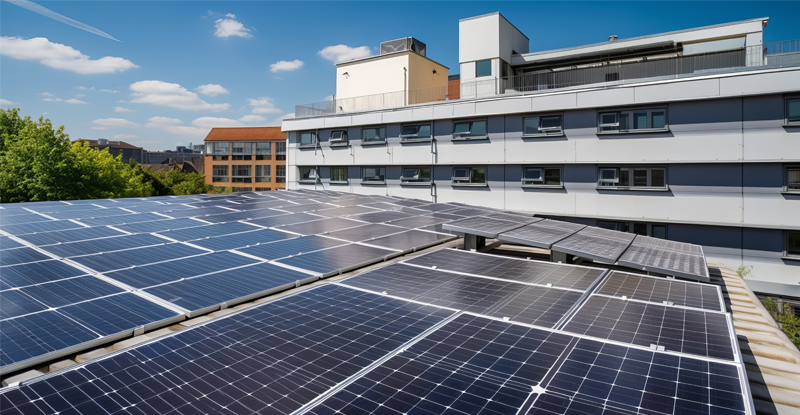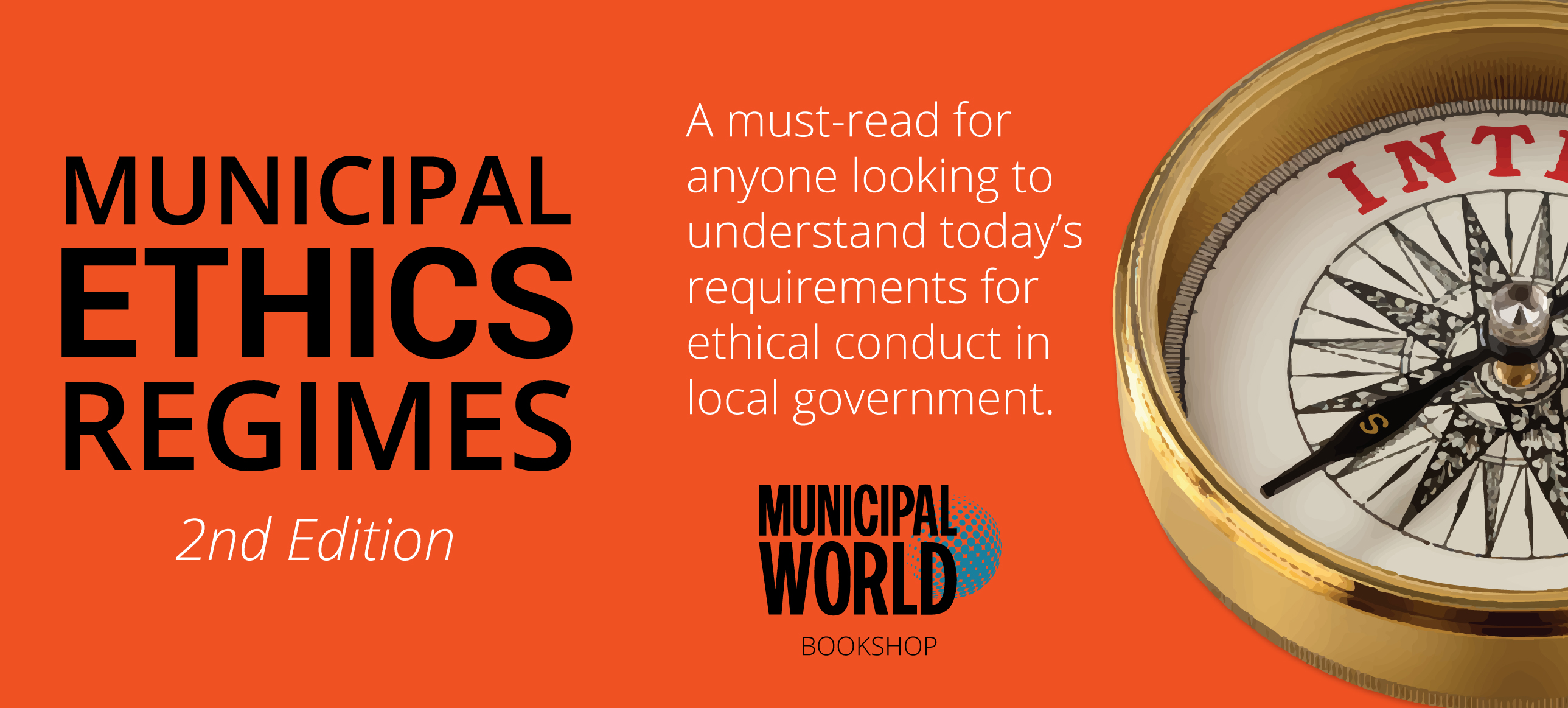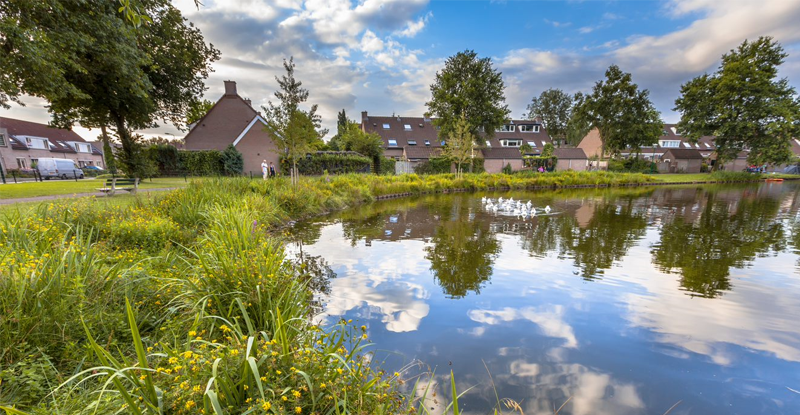Reducing municipal emissions, energy consumption supported by FCM, federal government

Efforts by communities across Ontario to find the best approach to reduce energy consumption and greenhouse gas (GHG) emissions at municipally owned buildings are being supported by the federal government and the Federation of Canadian Municipalities (FCM).
Six feasibility studies are getting more than $900,000 through the Green Municipal Fund’s Community Buildings Retrofit initiative, a joint program by FCM and the federal government.
“Whether big or small, communities are at the heart of climate action,” said FCM President Scott Pearce, who is mayor of Gore Township, Que. “The building sector is the third-largest source of emissions in Canada. That is why it is so important that communities in Ontario and across the country find green solutions that apply to it. Together, we can improve our community infrastructure, accelerate the path to net zero, and meet Canada’s climate change goals.”
The funds are being split between the cities of Sault Ste. Marie ($200,000), Barrie ($200,000), and Orillia ($98,360), and the towns of Caledon ($200,000), Carleton Place ($126,400), and Essex ($84,070).
Sault Ste. Marie Retrofits
In Sault Ste. Marie, the funding will help the municipality explore deep energy retrofitting of six of its buildings. These facilities include the John Rhodes Community Centre, East End Wastewater Treatment Plant, GFL Memorial Gardens, Public Works Centre, Fire Hall 4, and the Transit Administration/Garage.
Sault Ste. Marie Mayor Matthew Shoemaker said the funding will help speed up the city’s move to reduce carbon emissions. The city has a fund – colloquially referred to as the Green Fund – that provides $50,000 a year for projects that will improve local sustainability, reduce carbon emissions or, in many cases, be carbon captures like planting more trees.
Shoemaker said the new funding will help drive faster community results. Instead of one building a year over the next six years it will now be possible to do all six buildings in one year.
“It makes the roadmap that much easier,” Shoemaker said. “If we were funding it all on our own, waiting for the answers, we might be tackling a building this year, next year, that isn’t the highest priority in terms of ability to reduce carbon emissions.”
Shoemaker said recreational facilities are often a financial drain, but they are also key in having a livable, enjoyable city. All municipalities need to find ways to make them as efficient possible while still providing the great service they provide.
If it was just about reducing emissions, it would be easier to shut down local rec facilities,” Shoemaker said. “But if that were to happen, Sault Ste. Marie wouldn’t be the type of a community to call home. This is why the municipality must find balance between those two objectives.”
Partnering with FCM and the federal government is helping the city finding that balance.
“Sault Ste. Marie is not going to have the ear of the federal government on every single issue. But when you’ve got an organization like FCM that is the voice of municipalities across the country, you have a stronger voice together than any one of us do individually,” Shoemakers said. “It’s telling that the Prime Minister was at the FCM conference this year. It shows that collectively our voices are being heard. Trying to get the Prime Minister to come to Sault Ste. Marie or Thunder Bay or Saskatoon is a lot more difficult than having the Prime Minister come to an organization and listen to an organization that represents all our municipalities.”
Federal, FCM Municipal Support
That voice helped drive the studies that will be undertaken in the other communities named in a recent announcement.
In Caledon, the funds will help to identify methods to reduce energy and emissions for eight of its facilities, including a recycling facility, two community centres, two fire stations, and the town hall. The study will explore low-carbon building renewal opportunities such as equipment replacement, fuel switching, lighting upgrades, and renewable energy.
In Barrie, the study will examine GHG emission reduction measures for eight municipal facilities. These buildings account for 60 percent of the city’s building-related emissions. The study will consider unique aspects of each building, the potential for renewable energy, replacing equipment, and capital planning to identify optimal reduction pathways.
In Carleton Place, the funds will help to study the feasibility of achieving net-zero emissions at six municipal buildings. The facilities will include community centres, the town hall, and emergency services buildings.
In Orillia, the city will look at reducing GHG emissions at five municipally owned buildings. These facilities include the City Centre, the public library, Fire Hall 2, and the wastewater treatment centre. The study will also examine innovative technologies new to the city, such as geothermal heat pumps and ice plant heat recovery.
In Essex, funding will look at achieving net zero at the Essex Recreation Complex, Essex Centre Sports Complex, and Harrow Arena. This exploration will include examining a variety of measures. Installing geothermal heat pumps, converting remaining natural gas heating to electric heating, and adding heat recovery to the refrigeration plants at each facility are some of the possibilities.
“With 18 percent of Canada’s GHG emissions coming from our buildings, making new and existing builds more energy-efficient while simultaneously investing in clean infrastructure will be a crucial part of achieving our climate targets,” said Jonathan Wilkinson, Minister of Natural Resources. “The Government of Canada is pleased to help municipalities across Ontario identify and capitalize on opportunities to lower emissions, increase energy efficiency and switch to sustainable practices.”
Green Municipal Fund
The Community Buildings Retrofit initiative is part of a $950-million federal investment in FCM’s Green Municipal Fund (GMF), which is designed to scale up energy efficiency and lower emissions across Canada.
The GMF, which is administered by FCM and funded through an endowment by the Government of Canada, helps local partners switch to sustainable practices. It also provides municipalities the tools they need to reduce GHG emissions and build sustainable, prosperous communities. By taking action to adapt to climate change, we can build communities and economies that are able to thrive for generations to come.
“By investing in energy-efficient housing, we are building healthy and sustainable communities,” said Steven Guilbeault, Minister of Environment and Climate Change. “Canada’s ongoing transition to a net-zero economy requires innovative housing solutions that create jobs and build climate resilience while making life more affordable through energy savings. Projects and initiatives like the Green Municipal Fund’s Sustainable Affordable Housing initiative are helping us get there.”
Greener and More Sustainable
The studies being undertaken in all six communities are designed to reveal new strategies and approaches for addressing climate change. This is no different in Sault Ste. Marie.
Shoemaker said these studies are important for informing not only the municipality, but the residents as well. Residents understand the need to cut energy consumption and GHG emissions. That way, even if the municipality is keeping its energy consumption the same, the goal is to make that use greener and more sustainable.
“Part of telling the story is saying we need to tackle the climate change problem so that we can have a predictable future. We want the weather to be predictable. We want our historic weather patterns to be our future weather patterns so that we know what we’re doing in our community,” Shoemaker said. “Not only that, reducing the energy consumption of all these buildings also reduces the cost you spend on energy use in them. So there’s a direct financial benefit to doing a lot of these projects.” MW
✯ Municipal World Executive and Essentials Plus Members: You might also be interested in Sean’s other article: Climate action leading sustainable community conversation.
Sean Meyer is Senior Editor for Municipal World.
Related resource materials:



